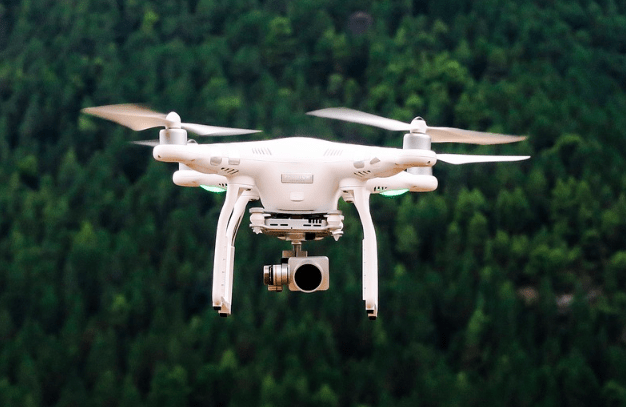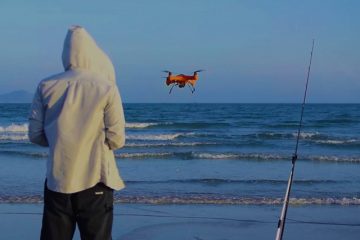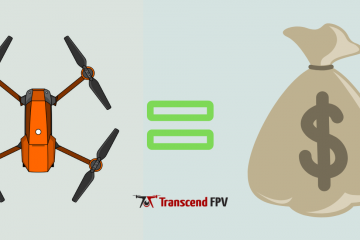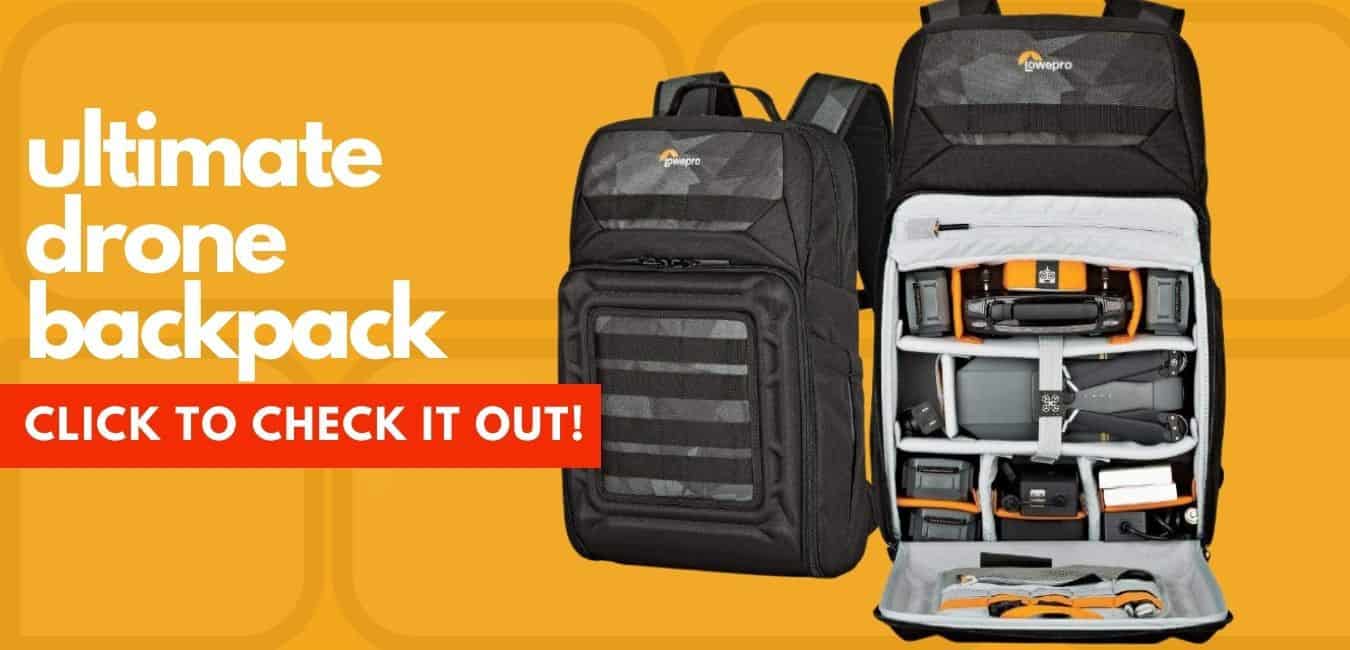How To Fly A Quadcopter In A Circle: Drone Control Tips
TranscendFPV is a reader supported product and review site. Clicking on links to learn more, or buy products, may earn us money, and support our work. Learn more about the history of TranscendFPV and our passion on our About page.
Today we’re going over how to fly your drone in a circle.
This is a basic move but it’s one you’ll need to master soon! This makes everything else easier, trust me.
If you’re having trouble flying your quadcopter for the very first time – worry not, since it certainly does take some practice. Watching tutorials and seeing other people who have already mastered their craft isn’t the same as operating it yourself, so if you’re feeling a bit confused – fear not!
It’s only natural for you to feel this way, but rest assured that you’ll undoubtedly improve your skills with time – and reading this guide is a giant step forward!
Regardless of the model of your quadcopter, this guide will prepare you for operating it for the first time or improving your flying skills in general. In order to address every single issue or question you may have, we will break down the process and thoroughly explain it step by step, tackling every single aspect.

First, we’ll go through the basics, such as checking the device before flying it, defining the controls, understanding and controlling the flight pattern – but there will also be a mention of some pro-tips. Keep on reading to discover everything you need to know about operating your quadcopter, including how to fly in a circle.
What is a quadcopter?
Defining a ‘quadcopter’ may cause some confusion, as you may have heard some people using the terms quadcopter and drone interchangeably.
While the difference certainly isn’t too drastic, as both terms are used to describe a recreational unmanned flying craft, we cannot say that they represent the same device.
Understanding the difference between the two may also help you grasp the technique of operating your quad, so let’s “clear the air” before continuing with the guide.
A DRONE represents a somewhat broader term, which is used to signify the majority of uncrewed aerial vehicles (UAV), both those controlled with a remote, and those controlled on a computer.
On the other hand, when discussing a quadcopter, we’re talking about a drone controlled by four rotors – hence the “quad” in the name.
Each of these rotors in the structure of a quadcopter contains a motor and a propeller, which is why it resembles a helicopter. When it comes to the way you can control the device, it is either controlled by a remote, or by an onboard computer, which is always pre-programmed.
Defining the main terms
When it comes to maneuvering and controlling your quad, it’s essential to have all your facts straight.
Not knowing what each of the controls and features does will only make you more confused, which is something you want to avoid, especially if you’re a beginner. Therefore, before you break the ice, you’ll need to dedicate some time to learning the basics.
When it comes to parts of the device, you will generally encounter:
- Remote control (transmitter) – With this device, you’ll be able to control your quad, as well as change any settings.
- Camera – When it comes to the camera, there are two possibilities: either you’ll receive a camera with your quadcopter, or you’ll be able to attach a camera to it.
- Propellers – The intensity of the spinning of the propellers is up to you, as you’re able to control it – as well as the speed of the movement.
Moving on, it is essential to familiarize with all the different controls in order to have absolute control:
- ROLL – This control literally makes the quad roll, either left or right, depending on your choice. For you to choose this control; all you need to do is push the right stick to either side.
- THROTTLE – If you want to increase it, push the left stick to the front. On the contrary, if you want to decrease, all you need to do is push it backward. Throttle allows you to control how high you’ll fly your quadcopter.
- PITCH – This control will enable you to tilt the device, either forward or backward, and it is achieved by moving the right stick in the desired direction.
- YAW – This control manages the rotation of your device, which you can use to change the direction while flying. In order to employ this control, push your left stick to the desired side, while maintaining the throttle so you don’t or fall!
An important fact to remember about controls is that they will CHANGE once the quad is facing you. This may be a bit confusing at first, but soon enough, it’ll become more of a reflex.
This doesn’t matter so much when you’re flying FPV (first person view) because whatever you SEE is always the direction the drone is facing.
In addition, there are also different flight modes you can switch between, usually by pushing certain buttons on your remote control or transmitter:
- Manual Flying Mode – What’s important to know when flying in this mode is that auto-leveling isn’t possible since the quadcopter won’t level itself back when tilted.
- GPS Hold Flying Mode – In this mode, the quadcopter returns to the initial position when you center both sticks, by using GPS.
- Attitude Flying Mode – It’s the same mode as the previous, only without the involvement of GPS.
What’s more, you need to understand the very structure of the machine before flying it, since it’ll make the entire process much easier, and you’ll gain more confidence. That being said, let’s go over the main parts briefly:
- Motors – As we’ve previously mentioned, a quadcopter is operated by four motors, the primary purpose of which is to spin the propellers. Each motor powers each of the propellers.
- Control Board – The flight control board is the main component when it comes to managing the speed of each of the motors.
- Remote Control and the Antenna – Remote control is the radio transmitter where you will choose the command. On the other hand, an antenna represents the receiver which “receives the message” and alerts the entire system.
- Propellers – Each of the four propellers is in charge of the flying direction.
- Battery – Your machine comes with a battery, which powers the quadcopter. Needless to say, you should remember to always recharge it before taking your machine on an adventure. If you happen to forget to charge your battery, perhaps the best solution for you would be to purchase multiple batteries, so you don’t have to charge the one you have all the time.
- Frame – The frame represents the structure that holds the quad together.
- Electric Speed Controls – These controls represent a vital part of your device, as they are the connection between the motors and the battery which powers the device. Therefore, they pretty much determine the spinning speed of the motors.
Pre-Flight Checklist
We’re almost ready to fly in a circle, don’t worry.
Now, before we get to the actual flying portion of this guide, we must stress the importance of the Pre-Flight Checklist. By following this checklist before your flying session, you can avoid any accidents. Also, it’s crucial to check up on your machine every once in a while, just to make sure that the components are in order.
Finally, checking those security requirements off the list will make you feel more confident, which is particularly crucial if you’re a beginner. As a part of your pre-flight check, you should make sure that the following aspects are in order:
Weather & Flying Site Check:
- Wind speed lower than 20 mph;
- Visibility at minimum 3 SM;
- Chance of precipitation should be under 10%;
- Check the site, to be aware of any buildings, trees, etc.;
- Beware of the pedestrians (inform them if needed) and animals in the site.
System Check:
- The registration number should be clearly visible;
- Beware of any unusual, potentially dangerous changes in all the parts;
- Remove the lens caps are make sure the lens is clean;
- Assemble the device and attach all the parts.
Pro tip: We may not always be aware of the power of the quadcopter while operating it. While this should be a fun experience, keep in mind that you’re flying a potentially dangerous device. Therefore, make sure to remember the following safety guidelines:
- Remove the battery or unplug the device before working on it since it can turn on accidentally and cause a severe injury.
- Protect your fingers from the propellers once you’ve turned the quad on.
- If you cannot avoid a crash, make sure to adjust the throttle to zero to avoid hurting someone.
- Flying the quad indoors can be quite a challenge, so make sure to “cage it” before you learn how to operate it in these conditions.
Flying your drone in a circle smoothly
Now that we’ve gone through all the basics, as well as security guidelines and important aspects of flying a quadcopter, we can get to the actual flying part.
Cutting to the chase right away would have made no sense, since the skill required to operate flying in circle calls for background knowledge. You should only attempt it once you have the basic operations down. In addition, learning to distinguish and employ different operations is of utmost importance.
In order to fly your device in a circle, you will need to practice and perfect the following operations:
- Pitch
- Roll
- Throttle
- Yaw
Not only will you be utilizing all of these flying operations – but you will actually be using them all at the same time. It sounds difficult, and it is.
That’s right – circle flying calls for simultaneous operation of 4 controls. Therefore, before getting your quad off the ground, make sure to perfect the aforementioned controls to avoid jeopardizing the device, or your safety.
IMPORTANT: By the way, this guide is not for manual or angle mode. This is only for horizon or self levelling mode!
1: Hover in the air
Now, once you feel secure enough to fly your machine, let’s get it off the ground by using the usual control, throttle, to get it up in the air. From here, just hover in place and maintain control of the drone by gently using the right stick to trim the drone and keep it hovering in one place.
2: Fly in a small circle
For now, we will explain the clockwise flying option (flying in a circle to the right).
The next thing you want to do is position the FRONT of the quadcopter away from you, now pushing the left stick upwards and to the right at the same time.
At the same time just gently push the RIGHT stick forward to make the drone move forwards. Because you’ve also got the LEFT stick pulled slightly to the right, you’ll be going forward but also turning to the right, resulting in the drone flying in a circle..
You can also try to switch between directions while rotating the right stick slowly. In case the machine starts rotating, there’s no need to panic – simply use the left stick to adjust the yaw of the machine by pushing it either to the left or the right side.
3: Practice yaw control
Once you get more comfortable with your quadcopter, you’ll want to explore different options and directions. For instance, if you want to rotate it using YAW, get the machine airborne by using the throttle, per usual.
The next thing you want to do is push the left stick either to the left or the right to achieve rotation in a single place. Make sure you keep the left stick steady because you’re also controlling your throttle, which determines whether you rise or fall.
Keep doing that until you’ve rotated it 360 degrees in one place.
Once you push the left stick to the other side, you’ll be able to rotate it 360 degrees, but in the other direction. And remember, practice makes perfect!
Speaking of practice and perfecting your craft, perhaps you’ll want to set some goals for yourself to really master flying your quadcopter. Once you’ve mastered the flying in a circle part, maybe the next challenge could be operating in a so-called figure 8 pattern, which requires you to set the quad facing forward and keep it that way.
Another interesting, yet not-so-easy challenge would be to make bank turns with your device. In order to achieve this, use pitch for a forward movement. Then, choose throttle to roll the quad either left or right, following the direction of the turn, which will result in bank turns.
Learning more
Here are some interesting and useful things to read for improving.
- Getting better at FPV racing: Drone racing is difficult. This article gives you lots of tips and techniques for getting better at controlling your drone!
- The best drone simulators: It’s always good to practice drone flying and movements in a simulator, and you’ll save a lot of money that way!



